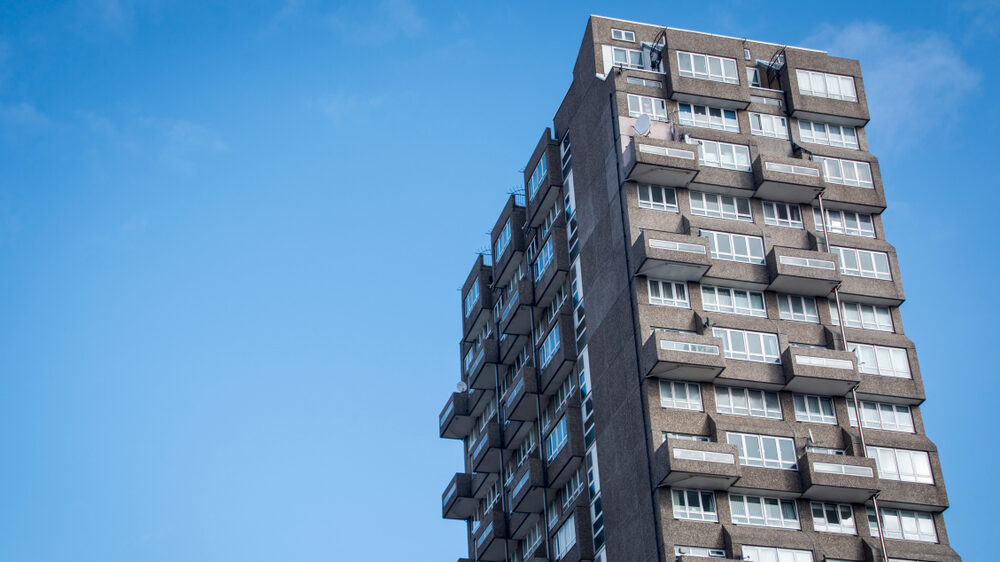The take-up of evacuation alert systems in high-rise buildings
- August 21, 2023
- 9:19 am


Iain Hoey
Share this content
John Davidson, Approval Schemes Manager at the National Security Inspectorate, reviews recent developments influencing the take-up of evacuation alert systems in high-rise residential buildings
Six years after the Grenfell tragedy in June 2017, significant changes have been made to fire safety legislation, building regulations, standards and codes of practice.
Notable among them is the recent requirement for evacuation alert systems in all newly built high-rise residential buildings in England.
These systems are separate from fire detection and alarm systems.
Evacuation alert systems are designed for use by Fire & Rescue Services (FRS) as a ‘last resort’ measure when the ‘stay put’ strategy fails.
This may occur due to factors like a wind-driven fire or simultaneous fires within the same building.
These systems enable the FRS to warn occupants of flats to evacuate immediately in a controlled manner without physically knocking on doors.
This saves time and allows the FRS to prioritise critical evacuation areas, reducing the need to deploy firefighters for evacuation purposes.
Evolving standards and legislation
In response to the Grenfell Tower Inquiry Phase 1 report, the Scottish government recommended the installation of evacuation alert systems in new residential buildings that are 18 metres tall and higher.
This necessitated the creation of a standard, BS 8629: 2019, to ensure the effectiveness of these systems when installed.
Amendments to this standard were considered just two years later and introduced in March 2023, reflecting the evolving nature of this fire safety measure.
In England, separate amendments to the Building Regulations (Approved Document B) came into effect on December 1, 2022.
These amendments require the installation of evacuation alert systems in all new high-rise residential buildings taller than 18 metres.
Existing buildings of this height that undergo substantial alterations in the future also fall under these requirements.
However, similar requirements currently do not cover Wales or Northern Ireland.
Those responsible for the fire safety of approximately 12,500 high-rise residential buildings in England are being warned to comply with the incoming legal requirements under the Building Safety Act 2022.
They have a six-month period, starting from April 1 2023, to register with the new Building Safety Regulator established in response to the Grenfell Tower fire to protect residents from unsafe building practices in England.
The Building Safety Act defines “higher-risk” buildings as those that are 18 metres tall or higher, or at least seven storeys with two or more residential units.
The HSE’s ‘Be Ready’ campaign is alerting “accountable persons” (e.g.
building owners, freeholders or management companies) that they must comply with the Act by October 2023 or face investigation and potential prosecution.
Considering the evolving regulatory landscape and the focus on the evacuation of tall buildings, interest in evacuation alert equipment is expected to intensify.
It is essential to emphasise that evacuation alert systems should not be used as compensation for any reduction in fire protection measures, or as mitigation for construction defects such as inadequate fire compartmentation within a building.
Evacuation alert systems typically consist of secured evacuation alert control and indication equipment.
These systems include manual controls for the Fire & Rescue Service to operate enabling evacuation alert sounders in groups of flats, as well as in areas like gyms, restaurants and roof gardens that may also need to be evacuated.
Provisions for those with disabilities may include visual alert systems, vibrating pillow pads and vibrating pagers.
Issues such as the integrity of evacuation alert systems are addressed in BS 8629, which covers both wired and wireless systems.
For example, all wiring must be enhanced to ensure the system operates during a prolonged fire, while wireless radio systems must demonstrate the same reliability as wired configurations.
Competent oversight
A designated member of the premises’ management team should be appointed to supervise all elements.
Their responsibilities include ensuring the FRS is aware of, and familiar with, the system, and that residents understand the need to evacuate if the alert devices activate.
System logs (paper or electronic) must be maintained and monthly visual inspections undertaken.
Each system should be inspected, tested and supervised by a competent person every six months, which includes renewing the system’s certificate of compliance.
If this is neglected, the system will no longer be compliant with BS 8629, making ‘Duty holders’ vulnerable to potential prosecution, and may also render insurance invalid.
BAFE’s Evacuation Alert Systems Scheme SP207 was launched in 2020 following a thorough development process in conjunction with the fire safety industry and FRS.
Compliance with the scheme through third party certification enables system installation and maintenance contractors to independently demonstrate their competence.
As one of the industry bodies involved in the scheme’s inception and development, NSI was the first certification body to be licensed by BAFE for SP207, in October 2020.
As the scheme is modular, companies can gain third-party certification from NSI for one or more modules they provide i.e. the design, installation, commissioning and/or maintenance of systems.
Looking ahead
As all aspects of fire safety continue to be affected by tightening requirements, evacuation alert systems are likely to become an increasingly familiar sight in high-rise residential buildings, particularly if their scope is widened in future by law to include lower height blocks of flats.
For those charged with installing, inspecting and maintaining these systems, choosing providers holding NSI approval and BAFE registration for Evacuation Alert Systems provides reassurance on supplier competence which is crucial in ensuring fire safety standards are being effectively implemented.

